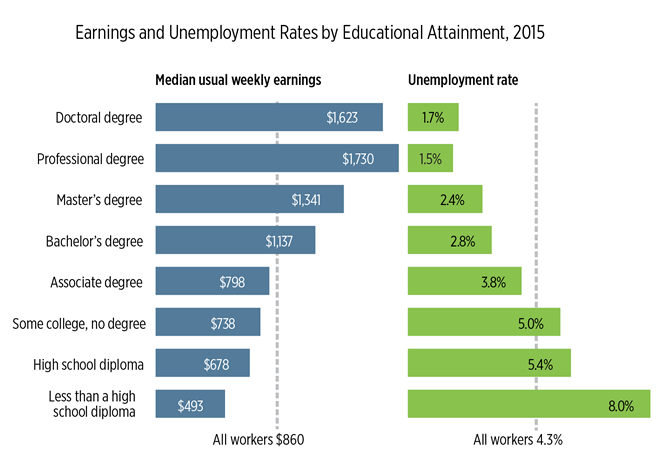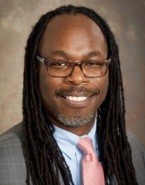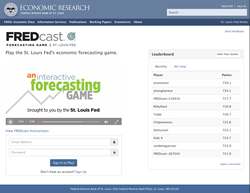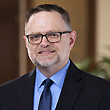Invest in Human Capital to Build a Better Future
"Whenever I am asked what policies and initiatives could do the most to spur economic growth and raise living standards, improving education is at the top of my list." 1
—Janet Yellen | chair of the Federal Reserve
The knowledge and skills that people obtain through education and experience are referred to as "human capital" by economists. People invest in human capital for similar reasons that businesses invest in physical capital and individuals invest in financial assets—they hope to earn income.
The relationship between education and income is well-established: On average, those with more education tend to earn more income. In 2015, the median weekly earnings of a person (age 25 and over) with a professional degree were $1,730, while those for someone with a bachelor's degree were $1,137 and those for someone with a high school diploma were $678. The differences are dramatic.
Watch as members of a carpenters' union talk about building their human capital by using our training materials on personal finance.
Narrator: Apprentice carpenters in a St. Louis union aren't just learning to build houses. They they're working on building their human capital. Specifically, they're taking an online course about personal finance that was put together with resources from the St. Louis Fed. The self-guided course covers budgeting, saving, buying a car or home, figuring out interest rates, planning for retirement, and much more. Although the course is optional, the apprentices feel it's needed.
Nathan Garrett: I know guys who are in bad home loan situations, who's either their mortgages are underwater, or their car payment is burdensome, and they're in it for many years. And so having a few numbers to share with them about the rate at which that stuff accumulates was helpful.
Ronald Stewart: I just paid off a truck and a car for my son, and we paid the minimum down payment. And what I learned on here is that the finances were way bigger versus if we would have just made a bigger down payment.
Nathan Garrett: A lot of the guys I work with also have families very young. It just puts a whole other level of urgency behind their budget. I mean, they often just don't have-- I mean, they just don't have wiggle room. They're buying diapers.
Narrator:Incorporating the course into the curriculum was a joint labor management effort. Dr. John Gaal, the director of training for the St. Louis Kansas City Carpenters Regional Council was instrumental in getting it off the ground.
Dr. John Gaal: We actually couched this issue of financial literacy as a safety course. You know, with the divorce rate here in the United States with a lot of the bad debt and the payday loans and all that kind of stuff, people bring a lot of baggage onto the work sites. If you think about it, if someone walks onto the job site and they don't have a clear head and they're not thinking about their job, they not just put themselves in danger, they put other people around them in danger. We need a clear mind. And one way to hopefully prevent those kinds of situations was to introduce financial literacy as a safety-related course.
Henry Johnson: It's possibly we can utilize this in our retention efforts as well. A lot of times, our apprentices will experience layoffs. They will experience possible injuries on the job. They will have inconsistent checks throughout their career. And I just felt it was important that the financial literacy was brought into the program.
Todd Erdman: The design portion of the program is my doing. I was the web designer and put the information together. And of all the information that the Federal Reserve has, it's wonderful information.
We had to narrow it down because we couldn't put everything in there. With so much that you have, and it's a wonderful tool. I find myself going back there online all the time and looking at the new stuff that you guys put out there.
Dr. John Gaal: You can Google financial literacy, and you'll find tens of thousands of groups out there that have come up with their own solution to financial literacy, but I needed to go with people I knew and trust. I do deal with people from across the United States and Canada. It's no secret that the St. Louis Fed is a leader when it comes to economics education.
Todd Erdman: Well, there's many things that I learned about this. Fantastic information. I was astounded at the amount of interest rates that the payday loans and title loan companies are getting from our membership because they just don't have a banking account or a checking account to cash checks. They're taking them here. Or if they come into a situation where they need the money, these places can charge up to 300%, 400% interest.
Narrator: Timelines as far as reporting lost or stolen cards. I didn't know there was a difference there on that. The advantages of using a debit card sometimes versus the advantages of when you should use credit. Some of those specific instances, I took away from you guys. I think it's a great course.
Narrator: So what kind of feedback does the union get from the apprentices who choose to take the eight-hour course? And what about older members of the union who can take it too?
Dr. John Gaal: It's actually kind of exciting when you see someone that's 53 years old write a comment back when they send in the course evaluations saying, I wish I would have taken this 20 years ago or something along the lines of this is great. We need more of it. It's very encouraging.
Todd Erdman: A lot of these guys-- I just had a student the other day that just came up to me, and he was so proud. He showed me his keys, and he was like-- I said, well, what are those? And he says, these are the keys to my new house. And so he took this class, and he understands what a balloon payment is and what an Adjustable Rate Mortgage, an ARM loan is, versus a 15-year fixed loan or a 30-year fixed loan and how to go about what points are, paying down points, and just all these things that we talk about in this course that was set up for them.
Henry Johnson: All the feedback that I've received from students has been 100% positive.
Narrator: Anyone can use the St. Louis Fed resources that were the basis for this online course for the carpenters. Go to www.stlouisfed.org/education to see these and hundreds of other tools for teaching yourself and others about the basics of economics and personal finance.
The benefits of education don't end with higher income. The 2015 unemployment rates of the groups mentioned above are 1.5 percent for those with a professional degree, 2.8 percent for those with a bachelor's degree and 5.4 percent for those with a high school diploma.2
 SOURCE: U.S. Bureau of Labor Statistics, Current Population Survey
SOURCE: U.S. Bureau of Labor Statistics, Current Population SurveyNOTES: Data are for persons age 25 and over. Earnings are for full-time wage and salary workers.
There is also a relationship between education and wealth accumulation. Better-educated people not only earn more dollars but are more efficient in translating income into wealth (assets minus liabilities).3 There are many factors that explain differences in wealth, but part of the story lies with the way well-educated families handle their money: They are more likely to have liquid assets to sustain a financial rough patch, they are more likely to have a diversified financial portfolio and they are more likely to keep debt low relative to assets.
So, the quip stands—education pays.
Family Financial Outcomes Based on Education
| Education* | Percentage of families | Median income (2013) | Median wealth (2013) | Wealth-to-income ratio** | Millionaires (family wealth) |
|---|---|---|---|---|---|
| No high school diploma | 12% | $22,320 | $37,766 | 1.43 | 1 in 110 |
| High school diploma | 50% | $41,190 | $95,072 | 2.15 | 1 in 18 |
| Two- or four-year degree | 25% | $76,293 | $273,488 | 3.45 | 1 in 4.6 |
| Advanced degree | 13% | $116,265 | $689,100 | 5.58 | 1 in 2.6 |
SOURCES: Boshara, Ray; Emmons, William R.; and Noeth, Bryan. "The Demographics of Wealth: How Age, Education and Race Separate Thrivers from Strugglers in Today's Economy." Essay No. 2: Education and Wealth, Federal Reserve Bank of St. Louis, May 2015, pp. 4, 5, 9, and 13;
2015-Education-and-Wealth.pdf.
NOTES: *Based on the education level of a family headed by someone 40 years of age or older. **This ratio shows how much wealth each group has per dollar of income. For example, the ratio for families without a high school degree was 1.43, which means that, on average, for every $1 of income there was $1.43 of wealth. The ratio is a measure of how efficient people are at turning income into wealth.
Economics and Civic Literacy
The benefits of education extend beyond the income and wealth of individuals. Economic knowledge is part of basic civic literacy. Being a thinking, voting and productive member of society requires an economic understanding of the world in which we live.
However, an even rudimentary understanding of this basic economic framework appears to be missing in the United States.4 This has implications for larger society. Understanding the issues being discussed in the public square today requires working knowledge of the trade deficit, budget deficit, monetary policy, banking regulation, financial markets and tax law, to name a few of the key topics.
Further, living in a representative democracy grants citizens the ability to influence policy through their interactions with policymakers. Former Federal Reserve Gov. Frederic Mishkin suggested that as policymakers listen to their constituents, a "better-informed citizenry makes for better economic policymaking."5
Education and Productivity
Human capital is also a key contributor to productivity—workers with more education and skills tend to produce more output. Recently, the rate of productivity growth has slowed—from 2.5 percent during the years 1995 to 2010 to 0.4 percent from 2011 to 2015.6 This has economists concerned because productivity is a key driver of economic growth, real wages and living standards.
Recent research suggests that rising human capital explains about 20 percent of the growth in U.S. productivity from 1950 to 2007. The researchers estimated that educational attainment has been growing at about one year per decade, which has contributed about 0.6 percentage points to productivity growth per year.7 However, they warned that the growth in educational attainment has started to slow, which means that its contribution to economic growth—and income—will probably diminish as well.
As such, human-capital development is not only about individual income and wealth or even responsible civic behavior; rather, it has implications for the future growth of the economy and the standard of living of its citizens.
Shared Goals
How does this relate to the goals of the Federal Reserve System? The Fed has a congressional mandate to promote price stability and maximum sustainable employment. To understand how the Fed works toward these twin goals, people must be familiar with basic economic concepts. Former St. Louis Fed President William Poole said that while the Federal Reserve Act did not mention "the Fed's obligation in educating the nation's populace in economics, it has been an implicit mission from the start."8 And as former Fed Chairman Ben Bernanke said, "The Federal Reserve's mission of conducting monetary policy and maintaining a stable financial system depends on the participation and support of an educated public."9

Listen to Don Bertier, the father of a Boy Scout, talk about his son’s use of St. Louis Fed resources to earn a personal management merit badge.
"That was probably the best class I've ever seen put on."
This necessitates a deliberate strategy to lay the conceptual foundation for understanding how the economy works. People must understand the principles of inflation, unemployment and economic growth to assess whether the Fed is achieving its mandates. But, to be understood, these concepts require cognitive support. Underneath these concepts—the "bones" if you will—lie economic concepts such as scarcity, choice and opportunity cost. Upon that foundation lie the factors of production and supply and demand. And then comparative advantage.

Listen to Trevor A. Dawes, a university librarian, talk about working with the St. Louis Fed to help students and staff learn more about handling their personal finances.
"The library is a boundary-spanning organization."
And so the structure gets built from the ground up. It doesn't appear overnight. The St. Louis Fed provides economic literacy support by providing high-quality (award-winning) lesson plans, online modules, publications, podcasts, videos and professional development opportunities for people of all ages. In this way, the St. Louis Fed provides the means by which people can increase their own human capital.
Echoing the need for this, Bryan Jordan, a member of the St. Louis Fed's board of directors, noted, "It doesn't matter whether you are young or whether you are old. The ability to connect the concepts of sound financial management with being able to participate in the economic vibrancy of communities, whether it be buying a house, getting a credit card or getting a job, are all important."
Watch as two of our outside board members talk about the need in their communities for personal finance and economic education.
Narrator: The outside directors of the St. Louis Fed also support our efforts to teach more people about basic economics and personal finance. Let's hear from two of them.
Karama Neal, who is the chief operating officer at Southern Bancorp Community Partners, a community development financial institution in Arkansas and Mississippi. And Brian Jordan, chairman, president, and CEO of First Horizon National Corporation, a regional bank based in Memphis.
There is such a need for people to understand how economics works both personally and in the larger economy. And so the contribution that you all have made by providing those materials on your website, providing the books that you do the resources that you do, the online class platform that you have, is fantastic. It's wonderful.
As Southern Bankcorp Community Partners, part of what our work is that we are focused really, our mission is around providing access to capital in under served communities.
And what we recognize is that there's quite a bit of financial education that needs to happen before people can access the capital responsibly. And so we see part of our role as providing that kind of economic education.
One of the things that we found is that it's not just enough to teach people. You have to actually be able to provide them with the tools to actually make it take advantage of that work.
So as you're teaching someone to open a savings account, but there's no bank in their neighborhood or they don't know how to use a savings account, that's not very helpful. They just know it, but they can't do anything with it.
And so one of the thing that the exercise is about using yours materials and similar ones is that not only can we teach people, but we can also help them connect with those resources to actually make use of the information that they've learned.
And I think the fact that that information, that kind of economic education information is coming from the Fed, an organization that's connected with people who can actually help people use the information they're learning is absolutely critical. You can see the impact of that work.
Economic education and financial literacy is probably the area or one of the areas where we least equip young people coming out of school. And I would say we tend to think about it in terms of young folks when it comes to financial literacy.
But I think it's a need in the broad perspective of society. Doesn't matter whether you're young or whether you're old. The ability to connect the concepts of sound financial management with being able to participate in the economic vibrancy of communities.
Whether it be buying a house, getting a credit card or getting a job or all important is all driven by credit score. And I think that the Fed is doing in conjunction with educators and financial institutions. And other to strengthen people's understanding of financial literacy, financial education is very, very important.
So the Fed in Memphis has been active in engaging and communicating about what's going on in the economy. But it's also participating at a ground level helping people understand your balance a checkbook, to manage your money in such a way that your credit score remains high.
You can get that mortgage, you get your credit card, you can buy your car. All of which gets you into the broad perspective of society.
The St. Louis Fed has wonderful economic education materials. And I've used those myself, I've shared them with other people. It's a fantastic resource.
Added Karama Neal, a member of the Little Rock Branch's board of directors, "There is such a need for people to understand how economics works, both personally and in the larger economy. "
"The St. Louis Fed has wonderful economic‑education materials. I've used them myself."
A few of our resources to help build human capital and civic literacy:
- Read Education, Income and Wealth, a short, easy-to-follow essay in the January 2017 edition of Page One Economics that discusses the links between education and both income and wealth.
- Watch Saving for College, a short video that follows a high school student as she learns about investing in human capital, factors to consider when choosing a college and ways to finance a higher education.
- Listen to the The Labor Market, an episode in the Economic Lowdown podcast series, to hear how a young person looking for that first job can learn about labor market basics: the role of education, supply, demand, productivity and government regulation.
For these and hundreds of other resources, start at www.stlouisfed.org/education.
Endnotes
- See Yellen. [ back to text ]
- See Employment Projections. [back to text]
- See Boshara et al. [ back to text ]
- See Lusardi. [ back to text ]
- See Mishkin. [ back to text ]
- See data in FRED (Federal Reserve Economic Data) at https://fred.stlouisfed.org/graph/?g=chrH. [ back to text ]
- See Fernald et al. [ back to text ]
- See Poole. [ back to text ]
- See Fernald et al. [ back to text ]
References
- Bernanke, Ben. A Message from Chairman Bernanke, a speech delivered at Federal Reserve Bank of Dallas, July 2006. See https://web.archive.org/web/20090601102705/http:/www.dallasfed.org/educate/message.html.
- Boshara, Ray; Emmons, William R.; and Noeth, Bryan J. The Demographics of Wealth: How Age, Education and Race Separate Thrivers from Strugglers in Today's Economy. Essay No. 1: Race, Ethnicity and Wealth. 2015. See https://www.stlouisfed.org/~/media/Files/PDFs/HFS/essays/HFS-Essay-2-2015-Education-and-Wealth.pdf.
- Employment Projections. U.S. Department of Labor, Bureau of Labor Statistics. See http://www.bls.gov/emp/ep_chart_001.htm.
- Fernald, John G.; and Jones, Charles I. The Future of U.S. Economic Growth. The American Economic Review, Vol. 104, No. 5, 2014, pp. 44-49.
- Lusardi. A. Household Saving Behavior: The Role of Literacy, Information and Financial Education Programs. 2008. National Bureau of Economic Research (NBER) Working Paper No. 13824.
- Mishkin, F. The Importance of Economic Education and Financial Literacy. Speech before the Federal Reserve Board at the Third National Summit on Economic and Financial Literacy, Washington, D.C. 2008. See www.federalreserve.gov/newsevents/speech/mishkin20080227a.htm.
- Poole, William. President's Message: The Importance of Economic Education, The Federal Reserve Bank of St. Louis' The Regional Economist, July 1998. See www.stlouisfed.org/publications/regional-economist/july-1998/the-importance-of-economic-education.
- Yellen, Janet L. At the Conversation with the Chair: A Town Hall Meeting, Washington, D.C., Jan. 12, 2017. See https://www.federalreserve.gov/newsevents/speech/yellen20170112a.htm.








